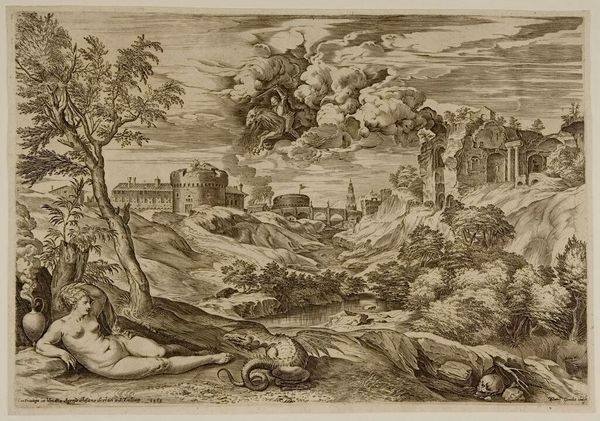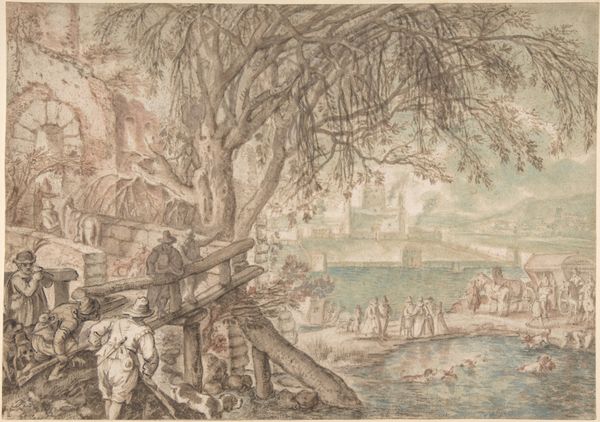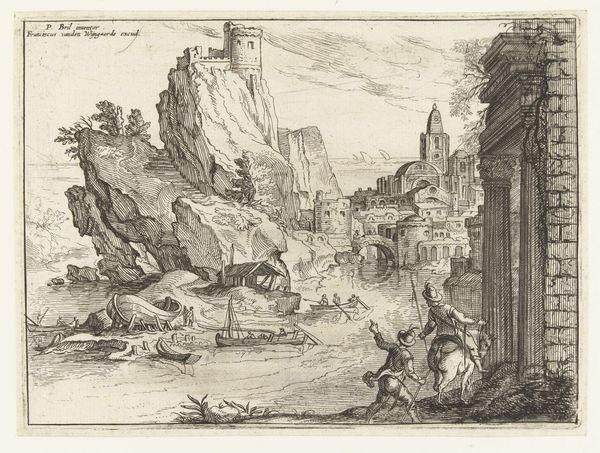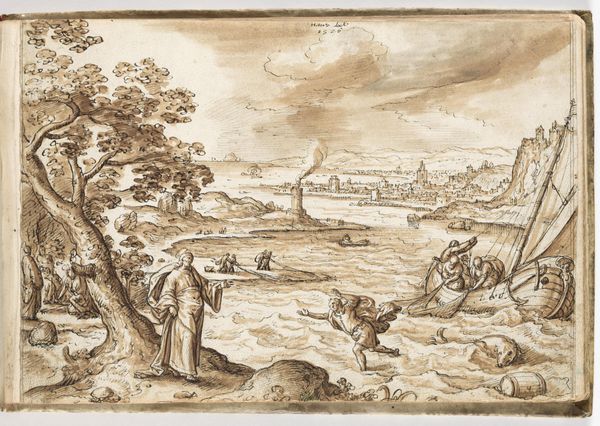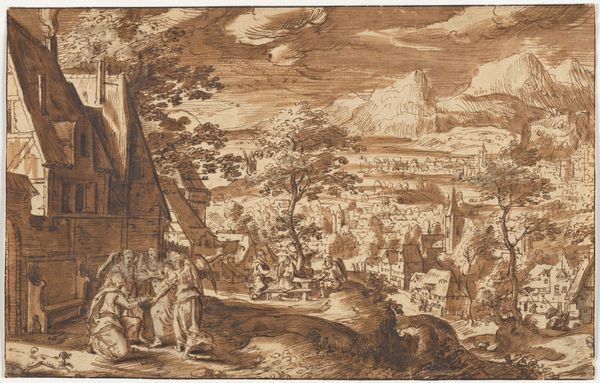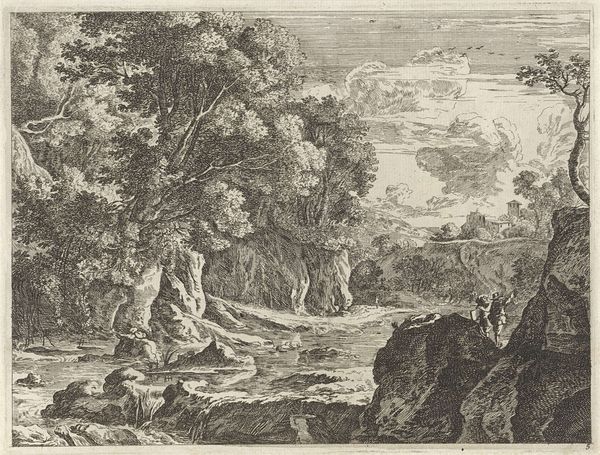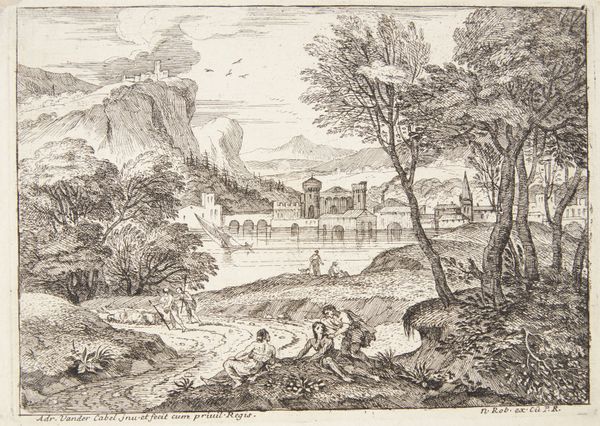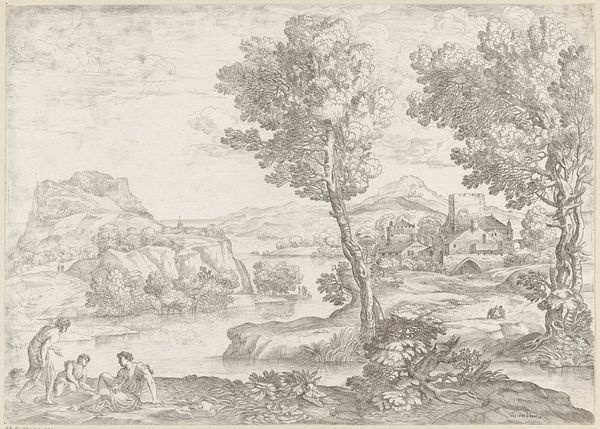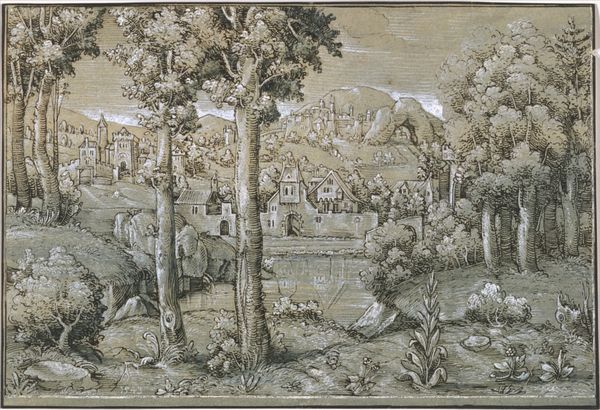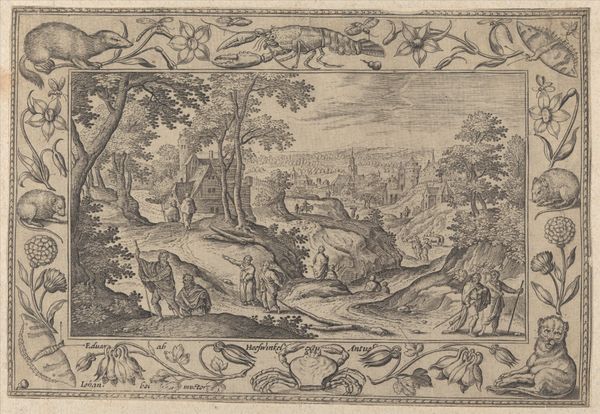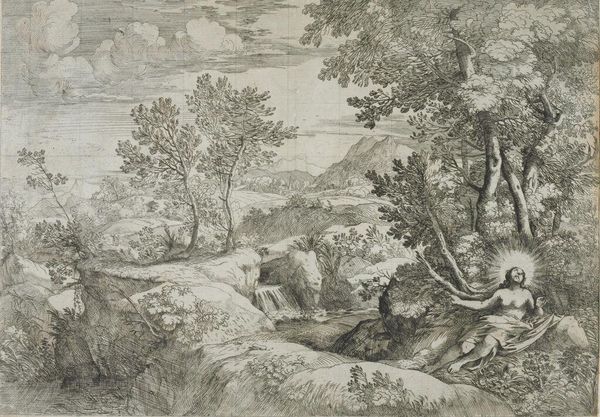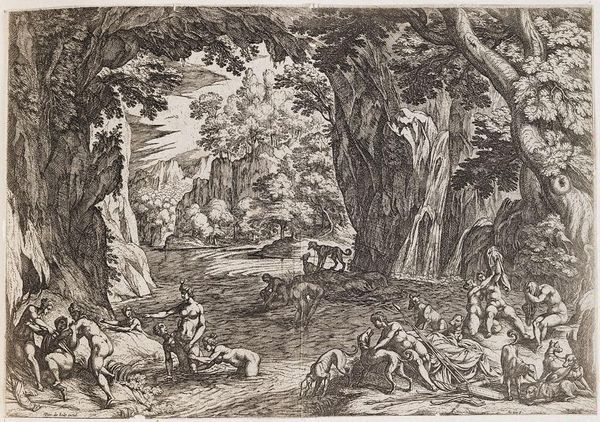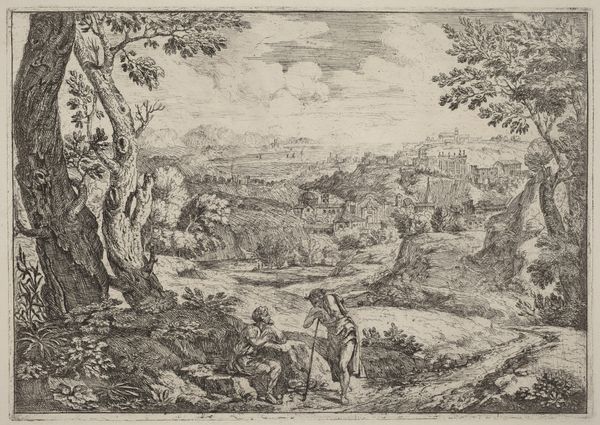
oil-paint
#
narrative-art
#
baroque
#
dutch-golden-age
#
oil-paint
#
landscape
#
figuration
#
genre-painting
#
history-painting
#
watercolor
Dimensions: height 96.5 cm, width 289 cm, thickness 3.9 cm, depth 6.1 cm
Copyright: Rijks Museum: Open Domain
Curator: Fabritius’ "The Prodigal Son" from 1661—such a spread of vignettes contained in a single composition. I find the spatial handling almost cinematic in its sweep. Editor: The palette feels quite grounded, earthen—a bit removed from the airy, almost ethereal qualities often associated with similar historical paintings. How does Fabritius utilize materiality and landscape to anchor this biblical tale? Curator: It strikes me as an attempt to make the spiritual physical. See how the figures are placed not within some abstract heavenly plane, but directly amid a somewhat bustling town and then a worn and crumbling shoreline—rendered in oils, of course. There's a very corporeal quality. The painting really becomes about what happens between the giver and receiver. Editor: Yes, precisely! And how that 'giving' hinges on material exchanges: wealth squandered and earned labor to get back again. It speaks of economic cycles. Did Fabritius ground the divine by drawing from ordinary trades and resources? Curator: Certainly feels so. And it gives a realness to the emotion; desperation, forgiveness… such visceral moments in an ostensibly grand narrative reduced down to just a man and his… I won't say daddy issues, but the core is there, laid bare. Editor: Look closely at that beggar—observe his state of ruin and near nakedness and compare him to the finely attired characters shown at the very left corner. Do you think he's more so attempting to draw on issues of inequality that reflect in Dutch Golden Age paintings? Or to what extent is his artistry addressing the economic conditions of the subjects, specifically how resources were hoarded and controlled? Curator: What intrigues me is its emotional core. The artist asks us to observe and understand not just this parable, but every time love comes into conflict with human nature. I suppose that also might speak to material issues and inequalities and cycles of poverty but the message lies deeper here; beyond surface reality there are still realities of what happens to us as humans. Editor: Perhaps the enduring nature of 'grace', even 'divine love', necessitates this cyclical labor and resource imbalance. We keep returning to base economics as our model for everything? Thank you, that has shifted my perspective somewhat; what first appeared just like common themes of ruin actually have deeper meanings rooted at it. Curator: Well, consider my reality adequately adjusted as well then! Such fruitful contemplations come up over Barent’s attempt here and I am grateful that we got this opportunity to come at the subject, too.
Comments
No comments
Be the first to comment and join the conversation on the ultimate creative platform.
